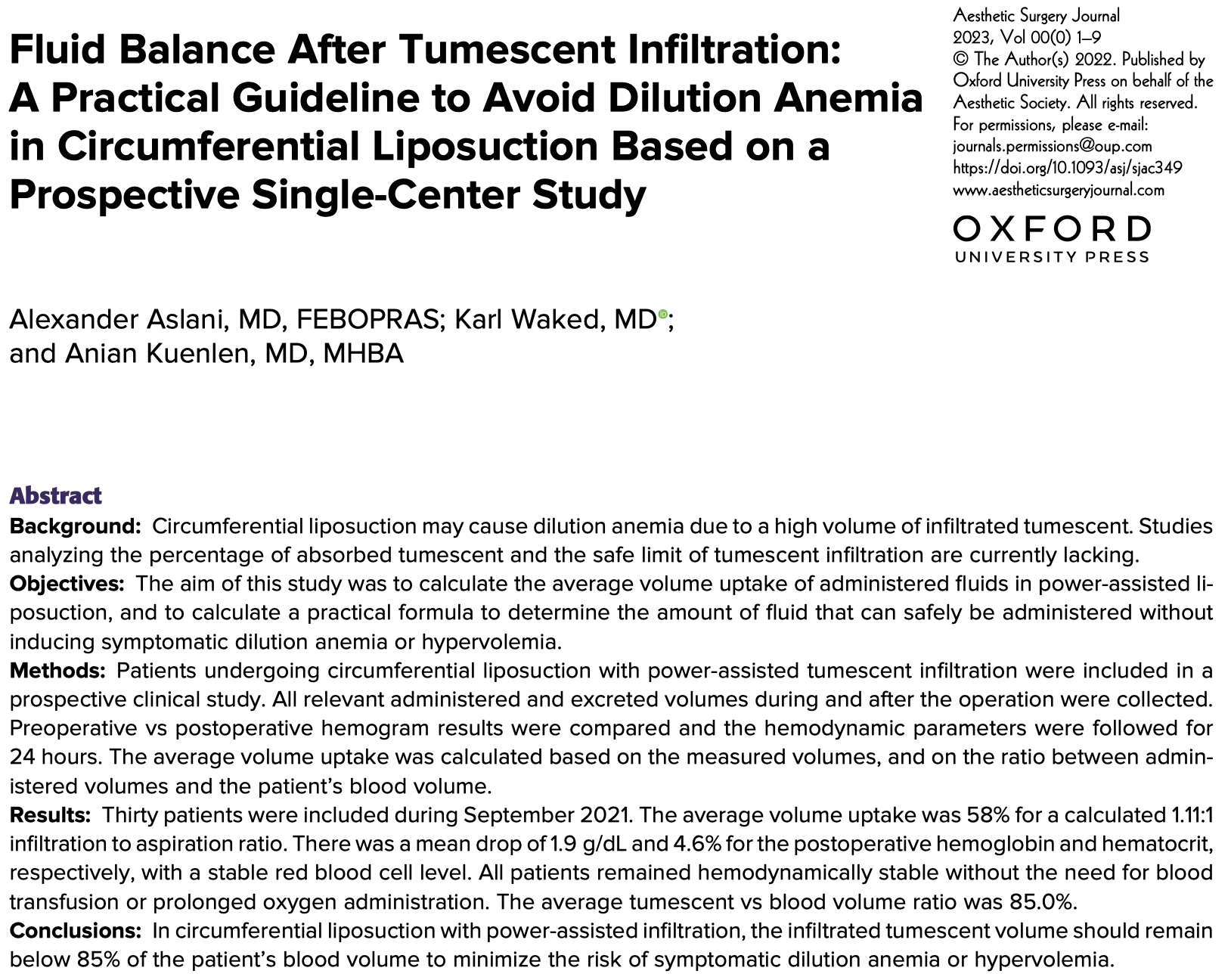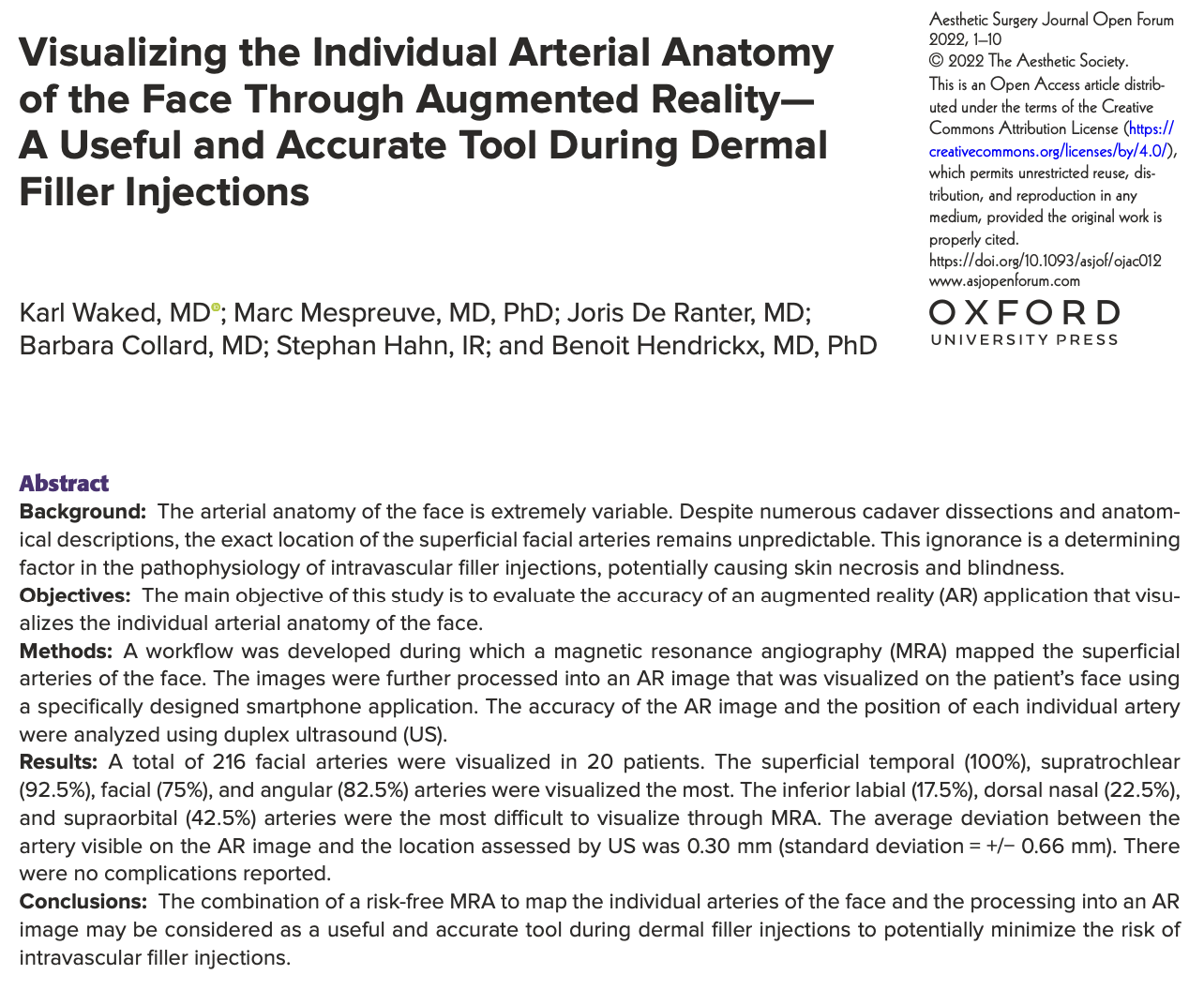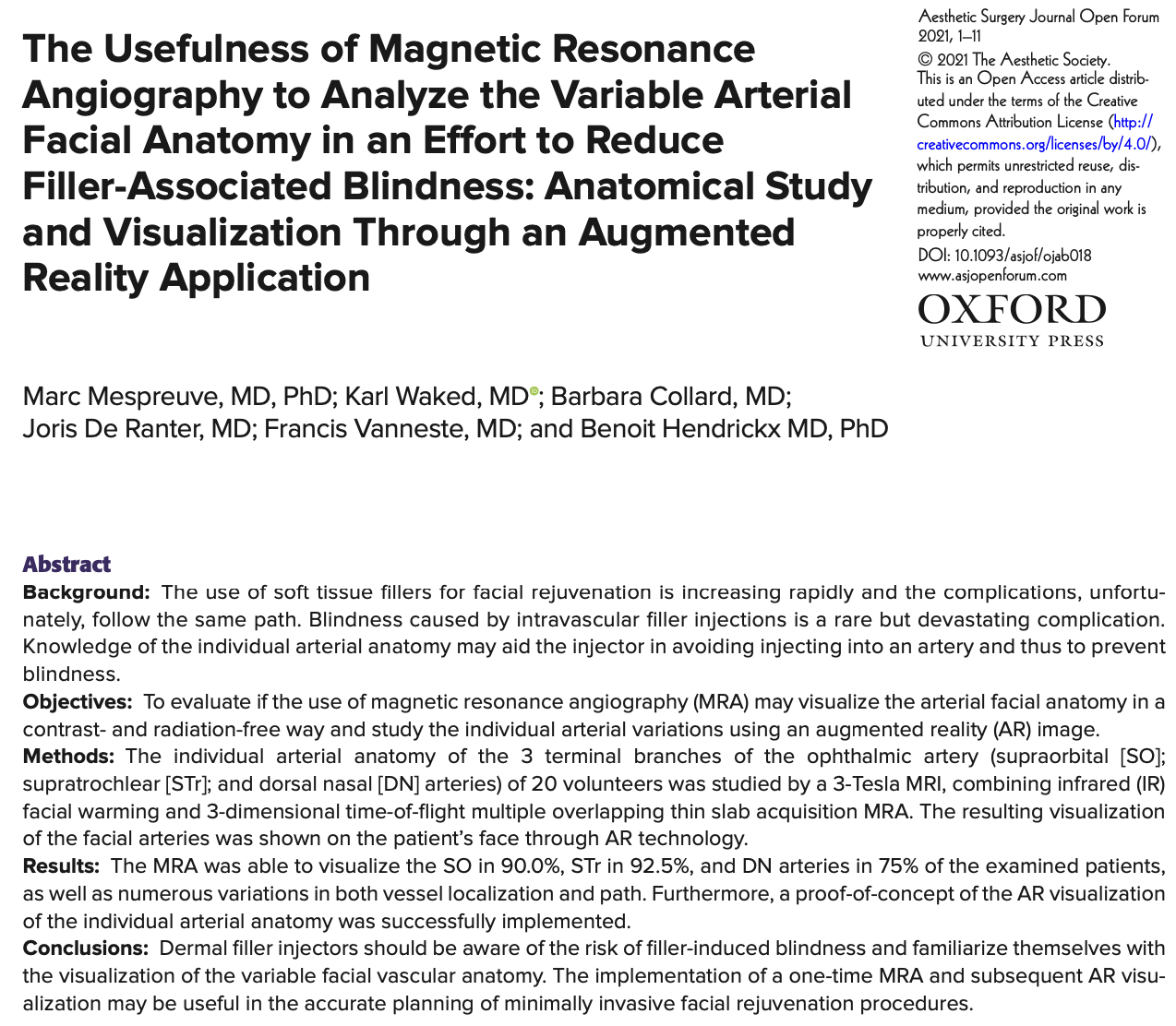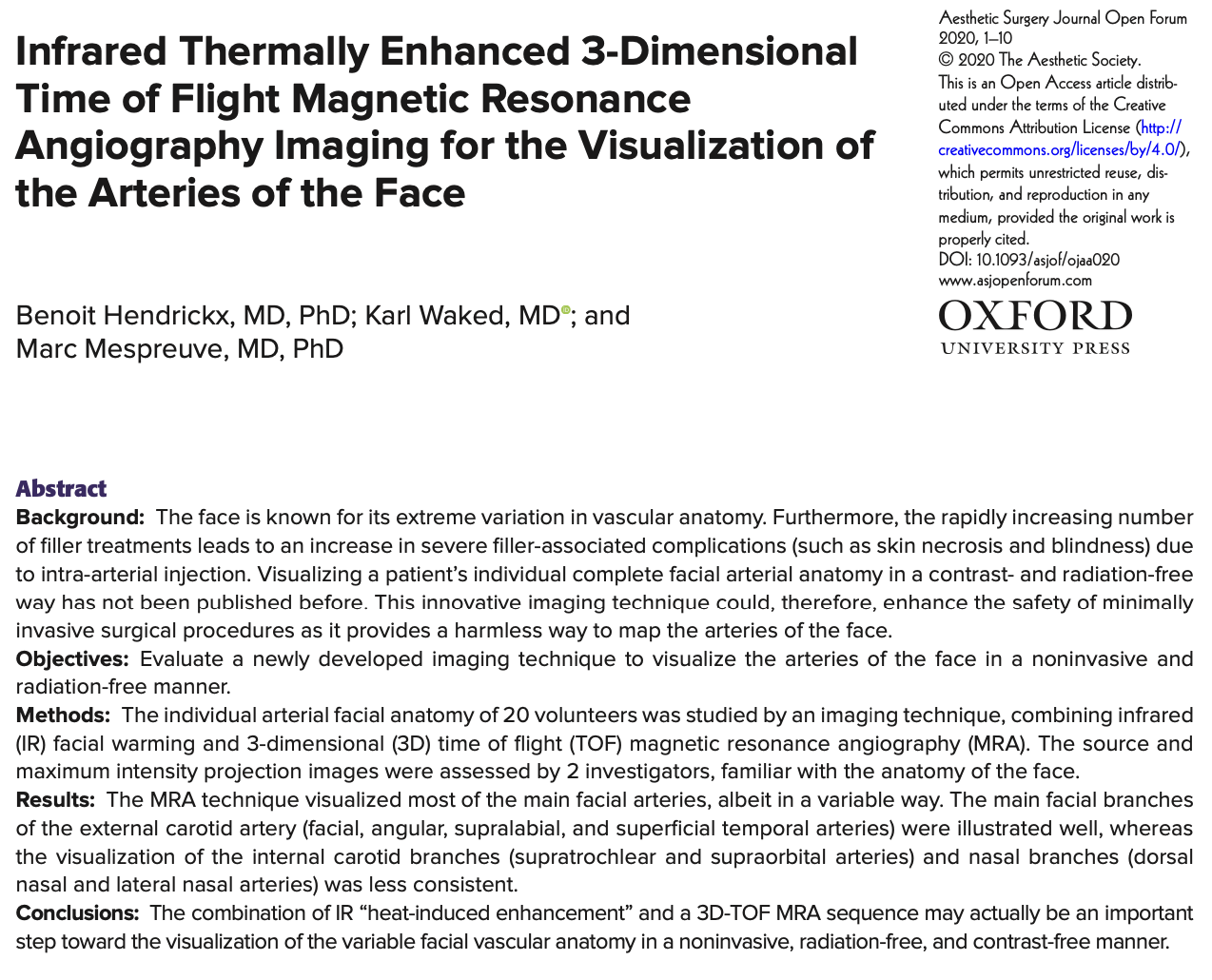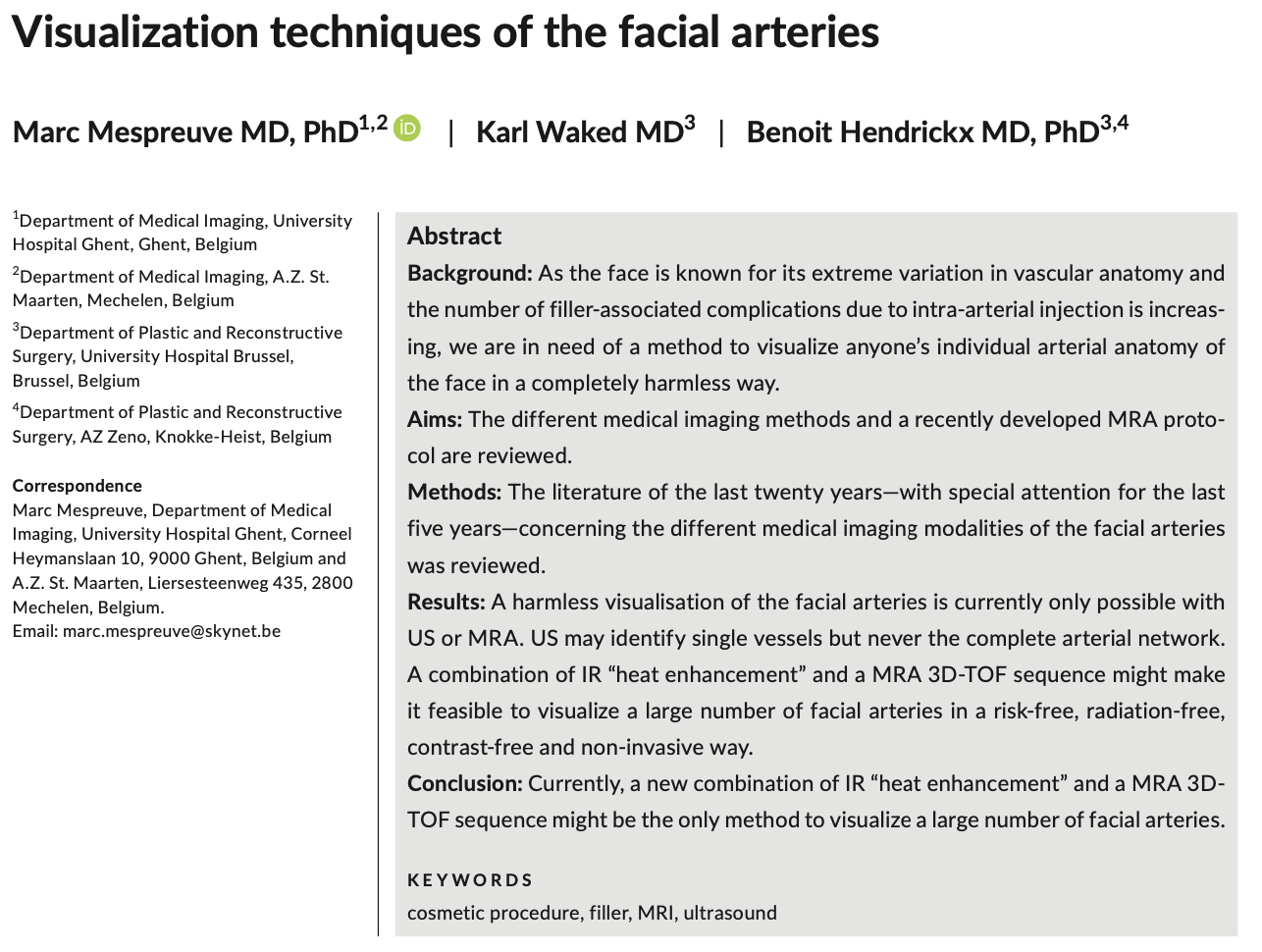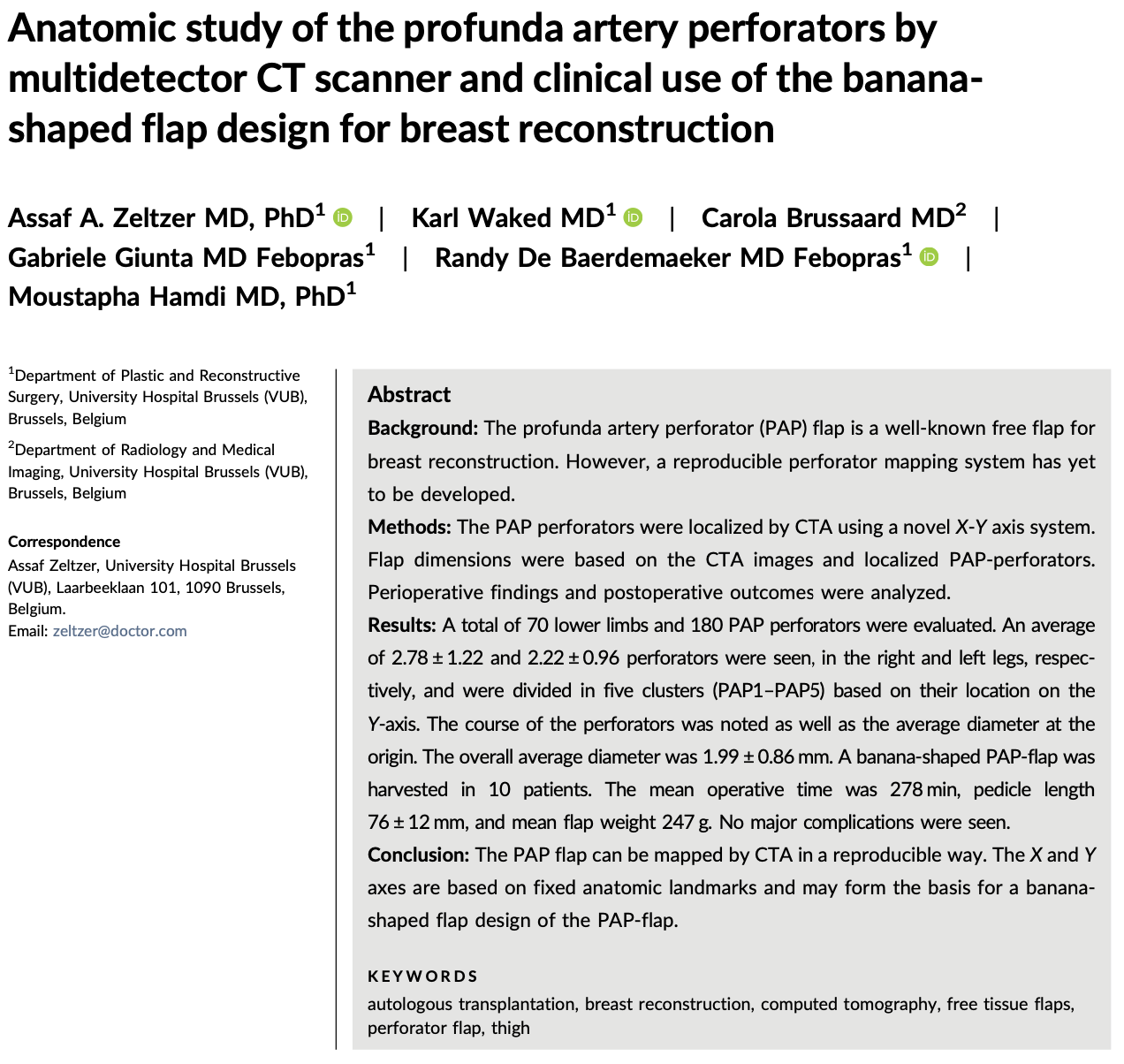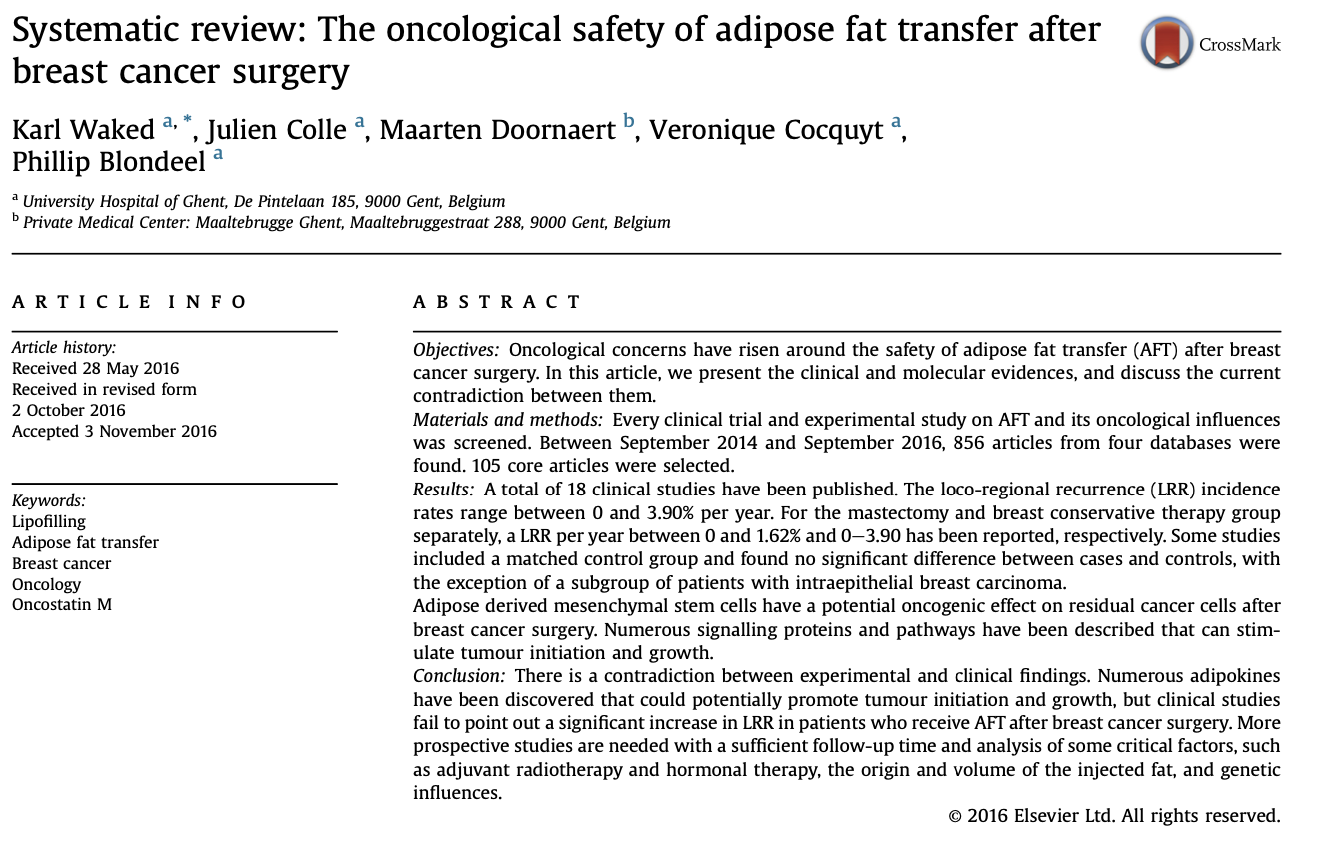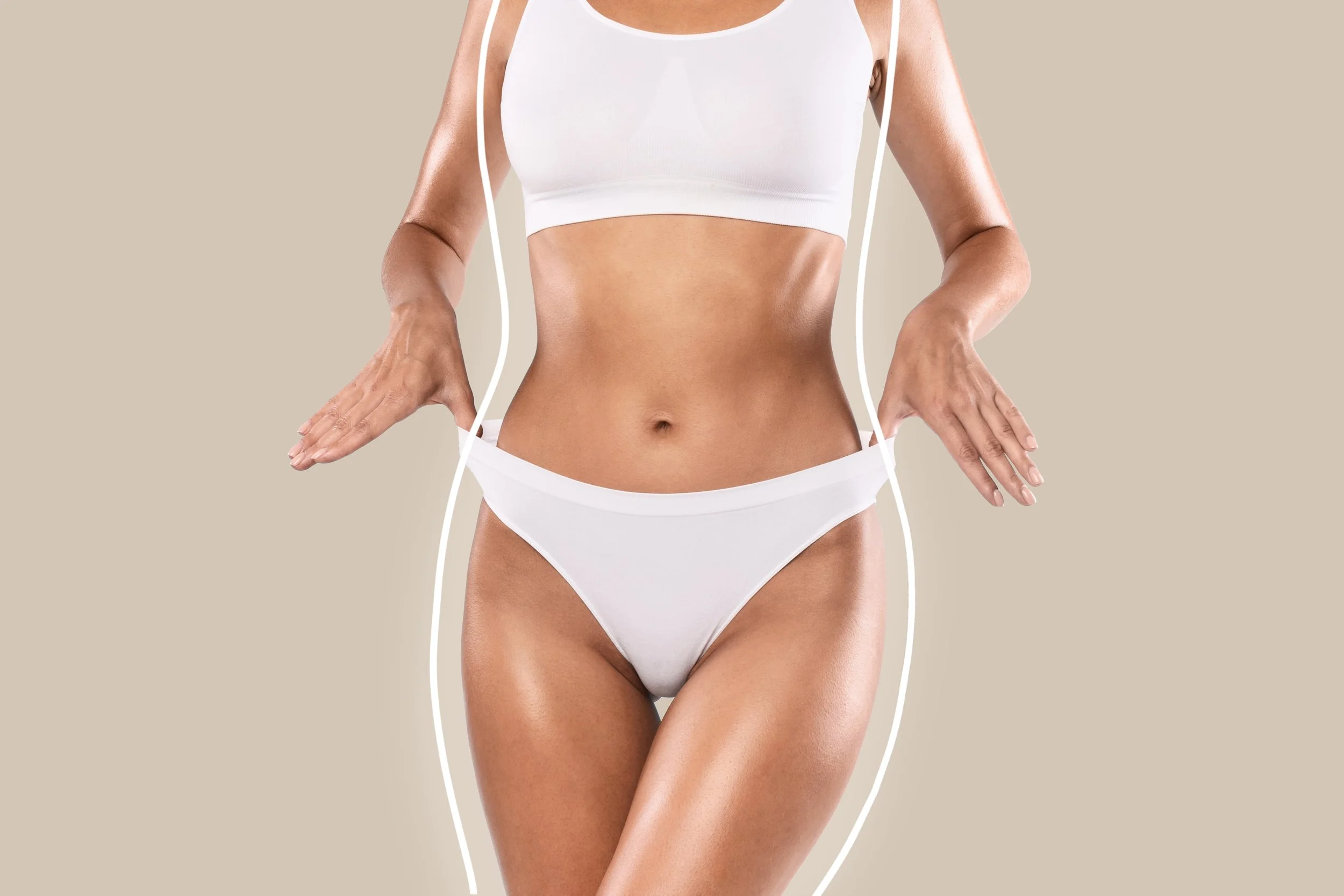Publications
“Scientific research is one of the most exciting and rewarding of occupations.”
A doctor is a scientist as well. Conducting research allows me to get new insights on how the body functions, how certain surgical techniques can be improved, and what the impact is of the surgery on a patient's quality of life. It allows me to continuously improve the care that I can provide to you.
Below you will find an overview of my publications. Some are open access, which means they can be read by anyone (just click on the article to go to the journal website). I provide you with a short summary of each article and give you insights on how my research improves my surgical technique, treatment options, and results.
Feel free to dig in !
Rejuvenating the mons pubis
A monsplasty is a very rewarding procedure that I continuously incorporate in a body contouring procedure, such as an abdominoplasty or tummy tuck. With aging or weight loss, there is often excess skin and/or bulging of the mons. This may not only cause functional issues but may be a psychological and hygienic burden as well. With the team of UZ Brussels, we published a state-of-the-art article in which we discuss an advanced surgical technique to correct a sagging or bulging mons and give the patient a flatter, more aesthetically appealing mons pubis. This study proves that the patients not only liked their abdomen much more after the procedure but that they also had a lot of functional and aesthetic improvements. I actively bring it up during the consultation when the indication is there and patients usually are very grateful for this little “bonus” I add to the procedure.
Click on the image to read the article.
Enhancing safety during liposuction
Performing liposuction is a technically demanding operation. Not only to deliver an optimal surgical outcome, but also to ensure optimal patient safety. One of the key aspects in patient safety, is making sure the fluid balance of the patient stays within the safety limits of the human body. At the start of each liposuction, a fluid is infiltrated in the subcutaneous tissue (the fat-compartment) to limit blood loss during the procedure and to loosen up the fat tissue. I have performed a clinical study to determine the safety limits of the infiltrated volume, to make sure the patient does not receive too much fluid inside the body. Based on clinical data, we have generated a scientific formula that every surgeon can use to calculate the amount of fluids that can be delivered to the patient. This not only helps the surgeon to prepare the surgery in a more optimal way, but it also enhances the patient safety during surgery and patient recovery after surgery.
Click on the image to read the article.
Visualising your anatomy through AR
These 4 articles are all connected to a company I founded in 2018, called Augmented Anatomy. Our core value is to visualise the patient’s individual anatomy through Augmented Reality. By showing the real anatomy through the skin of a patient, we are able to enhance the safety, improve surgical techniques, and provide better treatments for our patients. Our first product is called ARtery 3D, which enables me to visualise your facial anatomy, based on an MRI of your face. When it’s the first time that I would treat you with fillers, I may ask you to plan an MRI first. The MRI will allow me to visualise your arteries under the skin, so that I am sure I avoid an injection into a blood vessel. This will reduce the risk of complications, reduce the pain during treatment and reduce the risk of bruising. We have published both the MRI-technique and the development of ARtery 3D in a number of articles, which are free to read. The article also won the prize for best journal article of 2022.
Click on the image to read the article.
Breast reconstruction with a free flap from the inner thigh
If you are thinking about having a breast reconstruction (after successfully beating breast cancer), we have 2 main surgical options: using breast implants or using your own tissue. You can find more information on this by clicking here. In case that we would use your own tissue, the first choice remains the abdomen. However, the body offers a number of other regions (flaps) that can be harvested to create a beautiful, natural breast. One of those areas in the inner thigh. To improve the pre-operative planning of this kind of surgery, I have conducted a study to accurately detect the perforators (feeding blood vessels) into the flap and I have developed an axis system to mark them precisely on your leg during the pre-operative drawing. I apply a similar planning system for a tissue flap of the abdomen as well. This will help me during surgery to more precisely find the perforator. It makes the surgery quicker and safer, which will ultimately lead to a faster recovery and less downtime for you !
Click on the image to read the article.
Fat injections after breast cancer surgery
This is the first article I ever published and it involves research that I have conducted with my colleagues on the oncological risk of fat transfer to the breast after surgical treatment for breast cancer. If you had breast cancer for which only a part of the breast was removed, you likely had additional radiotherapy to treat the breast and further reduce the risk of cancer relapse. Although this is a very effective treatment, which avoids a complete mastectomy, the women often complain of a tissue defect and scar retraction at the site of operation. This is not only aesthetically unpleasant, but may cause discomfort and pain. Injecting a bit of your own fat (that we harvest through liposuction) is an elegant solution that can improve the breast volume and shape, and treat the scar retraction and discomfort at the same time. The main concern of this treatment has always been the potential increased risk of cancer relapse, as the transferred fat contains stem cells (cells that are in a very early development stage) that may become cancer cells once they are transferred into the breast. Through this extensive literature search we were able to investigate the risk. Fortunately, we could not find any proof of increased risk of cancer relapse after lipofilling of the breast. I am therefor still very much convinced of the benefits of this kind of operation and the improvements in the quality of life it can give to my patients. So if you would find yourself in a situation where you underwent breast-sparing surgery, do know that I can offer some very elegant solutions to restore the harmony of your breasts.
Read more about partial breast reconstruction and total breast reconstruction.
Click on the image to read the article.
Full list of publications
See below my full list of publications, which will be updated over time. They help to continuously develop and nurture the scientific mind.
De Cock D, Deleuze J, Nistor A, Giunta G, Waked K, Hamdi M. A comparison between immediate-delayed versus delayed autologous breast reconstruction using DIEP flaps. Journal of Plastic, Reconstructive and Aesthetic Surgery. 2024. DOI: 10.1016/j.bjps.2024.08.015
Hamdi M, Waked K, De Baerdemaeker R, et al. A Breast Sharing Technique using the pedicled IMAP flap for Delayed Breast Reconstruction and Contralateral Symmetrising Mammaplasty: A case series and evolution of the surgical technique in selected patients. Journal of Plastic, Reconstructive and Aesthetic Surgery. 2024. DOI: 10.1016/j.bjps.2024.09.087
Hamdi M, Kapila A, Peters E, Ramaut L, Waked K, Giunta G, De Baerdemaeker R, Zeltzer A. Polyurethane Implants in Revision Breast Augmentation: A Prospective 5-Year Study. Aesthetic Surgery Journal. 2024/ DOI: 10.1093/asj/sjae047
Hamdi M, Kapila A, Waked K. Current status of autologous breast reconstruction in Europe: how to reduce donor site morbidity. Gland Surgery. 2023. DOI: 10.21037/gs-23-288
Waked K, Kierdaj M, Aslani A. The Use of Carboxytherapy for the Treatment of Deep Partial-Thickness Skin Burns After Circumferential and High-Definition Liposuction: Promising Clinical Results in 5 Consecutive Cases. Aesthetic Surgery Journal Global Open. 2023;vol 5:1-9. DOI: 10.1093/asjof/ojad096
Kuenlen A, Waked K, Eisenbruger M, et al. Influence of VAC Therapy on Perfusion and Edema of Gracilis Flaps: Prospective Case-control Study. Plastic and Reconstructive Surgery Global Open. 2023;11:e4964. DOI: 10.1097/GOX.0000000000004964
Hamdi M, Waked K, Deleuze J, et al. The Monsplasty - Surgical and Functional Outcomes using an Effective and Reproducible Surgical Technique. Journal of Plastic, Reconstructive, and Aesthetic Surgery. 2023. DOI: 10.1016/j.bjps.2023.06.007
Aslani A, Waked K, Kuenlen A. Fluid Balance After Tumescent Infiltration: A Practical Guideline to Avoid Dilution Anemia in Circumferential Liposuction Based on a Prospective Single-Center Study. Aesthetic Surgery Journal. 2023;1-9. DOI: 10.1093/asj/sjac349
Waked K, Mespreuve M, De Ranter J, et al. Visualizing the Individual Arterial Anatomy of the Face Through Augmented Reality - A Useful and Accurate Tool During Dermal Filler Injections. Aesthetic Surgery Journal Open Forum. 2022;1-10. DOI: 10.1093/asjof/ojac012
Mespreuve M, Waked K, De Brucker Y, et al. Infrared Thermally Enhanced 3D TOF MOTSA MR Angiography for Visualizing the Arteries of the Face. MAGNETOM Flash SCMR Edition 2022
Zeltzer A, Waked K, Brussaard C, et al. Anatomic study of the profunda artery perforators by multidetector CT scanner and clinical use of the banana‐ shaped flap design for breast reconstruction. Journal of Surgical Oncology. 2021;1-11. DOI: 10.1002/jso.26703
Mespreuve M, Waked K, Collard B, et al. The Usefulness of Magnetic Resonance Angiography to Analyze the Variable Arterial Facial Anatomy in an Effort to Reduce Filler-Associated Blindness: Anatomical Study and Visualization Through an Augmented Reality Application. Aesthetic Surgery Journal Open Forum. 2021;1-11. DOI: 10.1093/asjof/ojab018
Waked K, Zeltzer A. Book chapter - Robotic-assisted omental lymph node transfer for lymphedema treatment. Publish date to be anncounced.
Mespreuve, M, Hendrickx, B, Waked K. Visualization techniques of the facial arteries. J Cosmet Dermatol. 2020; 00: 1– 5. DOI: 10.1111/jocd.13477
Hendrickx B, Waked K, Mespreuve M. Infrared Thermally Enhanced 3D-TOF MRA Imaging for the Visualisation of the Arteries of the Face. Aesthetic Surgery Journal Open Forum, ojaa020. DOI: 10.1093/asjof/ojaa020
Waked K, Zeltzer A, De Baerdemaeker R, Hamdi M. Mycobacterium Fortuitum infection after abdominoplasty and breast reduction: case report, diagnostic tips and tricks, and overview of the current therapeutic consensus. Surgical Case Reports. 2019. ISSN 2613-5965. DOI: 10.31487/j.SCR.2019.03.06
Mespreuve M, Bosmans F, Waked K, Vanhoenacker FM. Hand and Wrist: A Kaleidoscopic View of Accessory Ossicles, Variants, Coalitions, and Others. Semin Musculoskelet Radiol 2019;23:1–12. DOI: 10.1055/s-0039-1693974.
Waked K. Hamdi M. Reply to the Editor: Robotic-assisted DIEP flap harvest: A feasibility study on cadaveric model. J Plast Reconstr Aesthet Surg. 2018 Aug;71(8):1216-1230. DOI: 10.1016/j.bjps.2018.05.006.
Waked K, Zeltzer A. Reply to the Editor: The pedicled internal pudendal artery perforator (PIPAP) flap for ischial pressure sore reconstruction: Technique and long-term outcome of a cohort study. J Plast Reconstr Aesthet Surg. 2018 Jun 28. DOI: 10.1016/j.bjps.2018.06.007.
Waked K, Schepens M. State-of the-art review on the renal and visceral protection during open thoracoabdominal aortic aneurysm repair. Journal of Visualized Surgery. 2018;4:31. DOI: 10.21037/jovs.2018.01.12
Waked K, Ballaux P, Goossens D, Cathenis K. The “Two Bridges Technique” for sternal wound closure: The use of vacuum-assisted closure for the treatment of deep sternal wound defects: a center-specific technique. International Wound Journal. 2018:15(2):198-204. DOI: 10.1111/iwj.12823
Agha RA, Pidgeon TE, Borrelli MR, Dowlut N, Orkar TK, Ahmed M, Pujji O, Orgill DP, for the VOGUE Group. Validated Outcomes in the Grafting of Autologous Fat to the breast - the VOGUE Study: Development of a core outcome set for research and audit studies. Plastic and Reconstructive Surgery. 2018;141:00. DOI: 10.1097/PRS.0000000000004273 (PubMed citable collaborator)
Waked K, Colle J, Doornaert M, Cocquyt V, Blondeel P. Systematic review: The oncological safety of adipose fat transfer after breast cancer surgery. The Breast. 2017 Feb;31:128–36. DOI: 10.1016/j.breast.2016.11.001
Peters B, Waked K, Vanhoenacker FM, Ceulemans J, Mespreuve M. Internal herniation with bowel ischemia after Roux-en-Y gastric bypass surgery. Eurorad. 2016 Nov: online: http://www.eurorad.org/case.php?id=14127. DOI: 10.1594/EURORAD/CASE.14127
Mespreuve M, Waked K, Verstraete, K. Imaging Findings at the Quadrangular Joint in Carpal Boss. Journal of the Belgian Society of Radiology. 2017;101(1), p.21. DOI: 10.5334/jbr-btr.1257
Mespreuve M, Waked K, Verstraete K. Secondary Abutment Syndromes of the Wrist in Trauma: A Pictorial Essay. Journal of the Belgian Society of Radiology. 2017. 102(1), p.54. DOI: 10.5334/jbsr.1558
Mespreuve M, De Smet L, De Cuyper K, Waked K, Vanhoenacker F. MRI diagnosis of carpal boss and comparison with radiography. Acta Radiologica 2017 jan;284185116685925. DOI: 10.1177/0284185116685925




